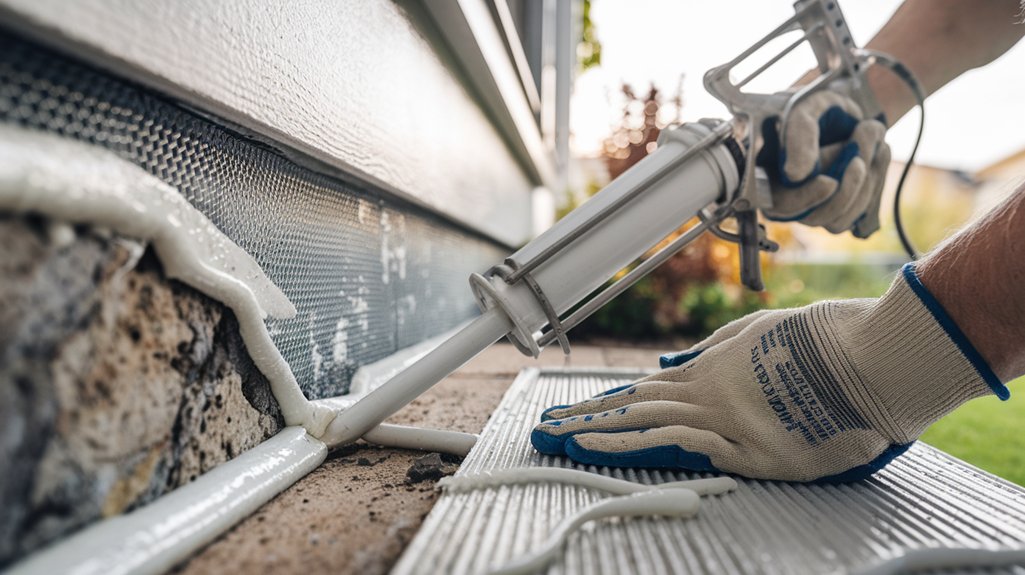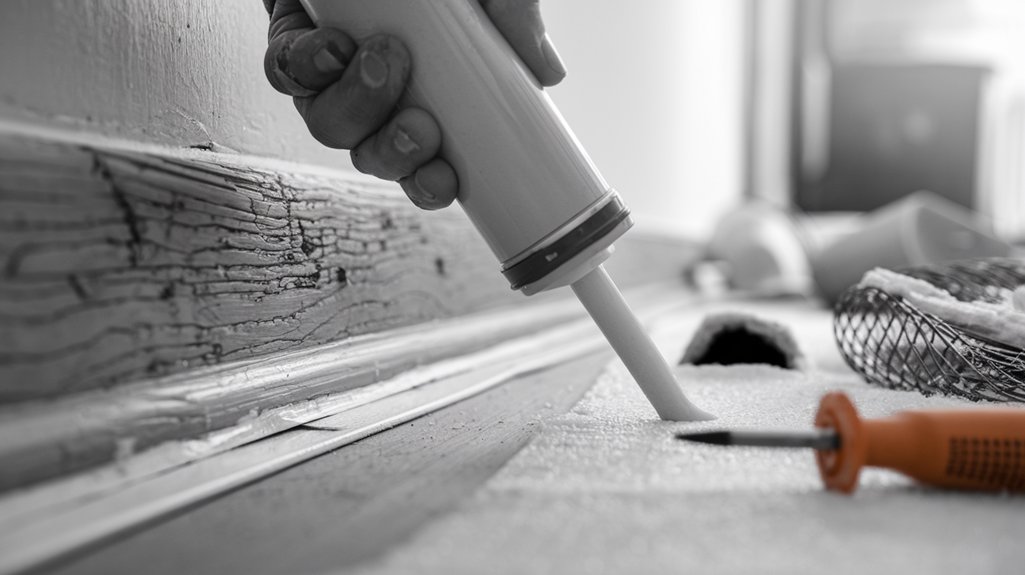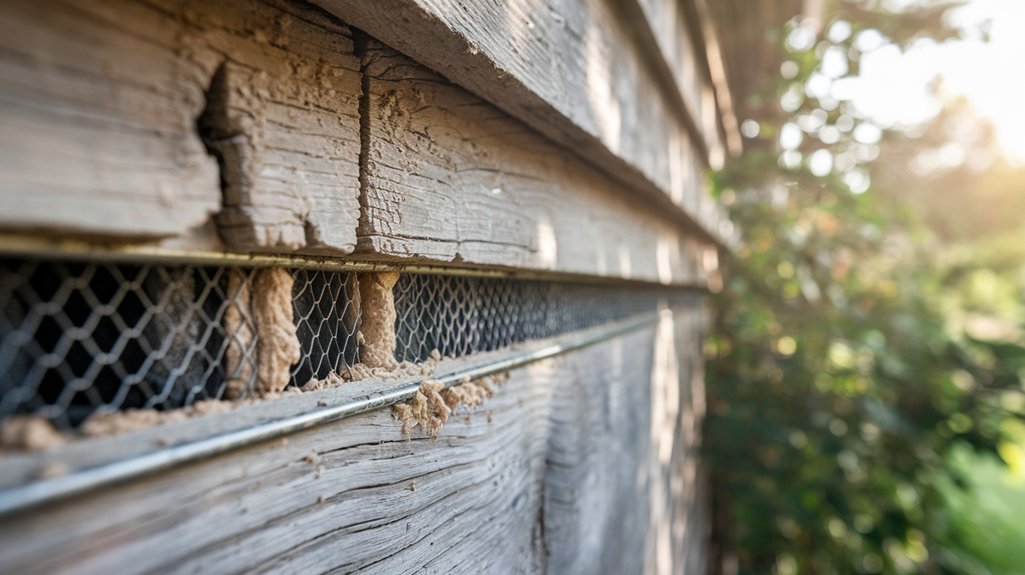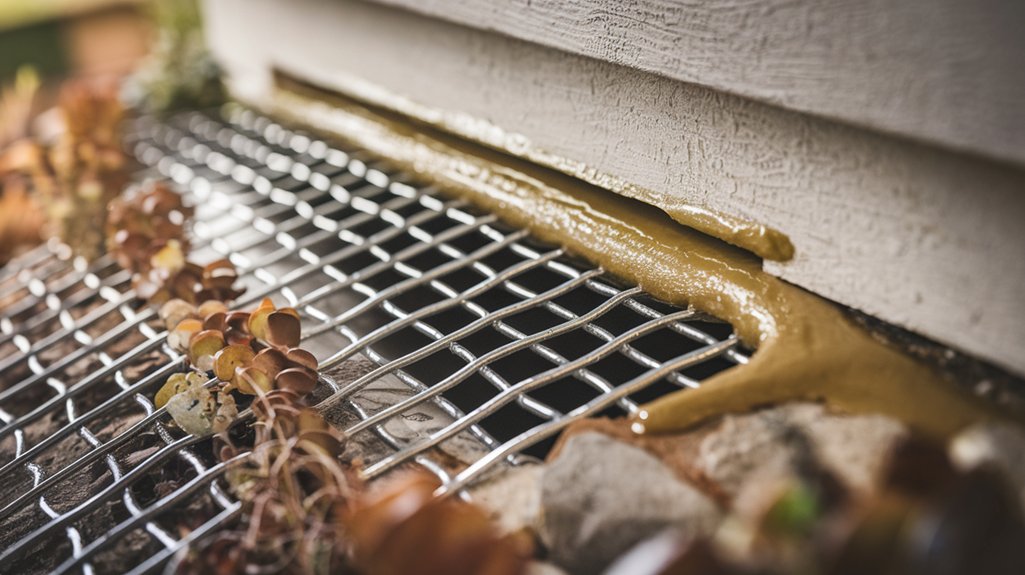Rodent-proofing your home is essential for maintaining a safe and healthy environment. You might not realize how easily these pests can enter through even the smallest gaps. By understanding their behavior and common entry points, you can take proactive steps to secure your space. Let’s explore the vulnerabilities in your property and the effective measures you can implement to keep these unwanted guests at bay.
Understanding Rodent Behavior and Entry Points

When you understand rodent behavior, you can better identify how they invade your home.
Rodents, like mice and rats, have specific nesting habits that make them seek shelter in warm, hidden areas. They often choose attics, basements, or wall voids, where they can create nests from materials like insulation or paper.
Their foraging behavior is driven by the need for food and water, prompting them to explore your kitchen, pantry, or any area with accessible crumbs.
Rodent Proofing Home protects your family. Learn pest tips from Colorado State University Extension.
Common Vulnerabilities in Your Home

Many homeowners overlook common vulnerabilities that can invite rodents into their living spaces. These weaknesses can lead to mouse nests in your home, creating potential health risks and property damage.
To keep your space rodent-free, pay attention to these areas:
- Gaps around windows and doors
- Cracks in the foundation
- Holes in walls and ceilings
- Unsealed vents and ducts
Addressing these structural weaknesses is crucial for effective rodent-proofing. Regularly inspect your home for these vulnerabilities and seal any openings you find.
Inspecting the Exterior of Your Property

To effectively rodent-proof your home, start by inspecting the exterior of your property. Look closely at your exterior materials, such as siding, brick, and foundation. Check for any signs of wear or damage that could provide entry points for rodents.
Pay attention to gaps around windows and doors, as well as vents and utility lines. Next, consider your landscape maintenance. Trim back shrubs and trees that touch your home, as these can serve as pathways for rodents.
Ensure that any mulch or debris is cleared away from the foundation, reducing hiding spots. By taking these steps, you can significantly decrease the likelihood of rodents making your home their own.
Sealing Gaps and Cracks
While inspecting your home, you’ll likely find various gaps and cracks that need attention. These openings can serve as entry points for rodents, so effective gap sealing and crack insulation are essential.
- Check around pipes and wires entering your home.
- Inspect the foundation for small fissures.
- Look at corners and edges of walls and floors.
- Don’t overlook areas around vents and ducts.
To seal these gaps, use caulk or foam insulation. Make sure to choose materials that can withstand temperature changes.
Securing Doors and Windows
Since doors and windows are common access points for rodents, securing them is crucial for maintaining a pest-free home.
Start by inspecting your doors and windows for gaps where rodents might squeeze through. Install weather stripping around door frames to create a tight seal, preventing any unwanted entry.
Don’t forget to add door sweeps at the bottom of exterior doors, as these can block gaps that are often overlooked. Ensure all windows close tightly and consider using screens to keep pests out while allowing fresh air in.
Regularly check these areas for wear and tear, and replace any damaged materials promptly. By taking these steps, you’ll significantly reduce the chances of rodents finding their way inside your home.
Managing Food and Waste Properly
After securing your doors and windows, the next step in rodent-proofing your home is managing food and waste properly.
Keeping your living space clean and organized is crucial in deterring rodents. Here are some tips to help you:
- Store food in airtight containers to prevent access.
- Clean up spills and crumbs immediately to eliminate food sources.
- Dispose of waste regularly in sealed bins.
- Compost food scraps in a rodent-proof bin if possible.
Regular Maintenance and Monitoring
To keep rodents at bay, regular maintenance and monitoring of your home are essential. Start with routine checks around your property, inspecting for cracks, holes, or any potential entry points. Pay special attention to areas like the foundation, windows, and doors. Seal any gaps you find using materials like steel wool or caulk to eliminate access routes.
Ongoing vigilance is key—keep an eye on your home’s exterior and interior. Look for signs of rodent activity, such as droppings or gnaw marks.
Don’t forget to maintain your yard by trimming overgrown vegetation and removing debris, which can serve as hiding spots. By staying proactive, you’ll significantly reduce the risk of a rodent infestation in your home.
Frequently Asked Questions
What Are the Best Materials for Sealing Entry Points?
When sealing entry points, you’ll find steel wool and expanding foam to be the best materials. Steel wool blocks small gaps effectively, while expanding foam fills larger spaces, ensuring your home stays rodent-free.
How Can I Tell if I Have a Rodent Infestation?
To tell if you’ve got a rodent infestation, look for droppings detection in corners and hidden areas. Also, check for nest identification in insulation or behind appliances. Those signs often indicate unwelcome guests in your home.
Are There Specific Seasons When Rodents Are More Active?
Yes, rodents often exhibit seasonal behavior, with increased activity during fall and winter as they seek shelter and food. You might notice more signs of rodent activity when temperatures drop and food sources become scarce.
Can Pets Help Deter Rodents From Entering My Home?
Yes, pets can help deter rodents. Their natural behaviors, like barking or prowling, often scare off potential intruders. However, combining their presence with other rodent deterrents enhances your home’s overall protection against unwanted visitors.
What Are the Signs of a Rodent Problem in My Attic?
During attic inspections, look for droppings identification, which often indicates a rodent problem. You might also notice gnaw marks, nesting materials, or strange noises, all pointing to potential infestations that need your attention.
By taking proactive steps to rodent-proof your home, you can significantly reduce the risk of infestations. Regularly inspect your property for vulnerabilities, seal any gaps or cracks, and secure doors and windows. Don’t forget to manage your food and waste properly to deter these pests. With consistent maintenance and monitoring, you’ll create an environment that’s less inviting to rodents, ensuring your home remains safe and comfortable for you and your family.
Contact Us
Rodent Proofing Home with Above & Beyond Services keeps your Denver home safe. Call (720) 806-6378 or visit Above & Beyond Services for free quotes on pest control, tree care, and more.
Key Takeaways
- Inspect your home’s exterior for gaps around windows, doors, and vents that may allow rodent entry.
- Seal cracks in the foundation and small openings around pipes and wires with caulk or foam insulation.
- Maintain landscape by trimming shrubs and clearing debris near the foundation to minimize hiding spots.
- Store food in airtight containers and clean up spills immediately to eliminate food sources for rodents.
- Regularly check and secure unsealed vents and ducts to prevent rodents from gaining access.




